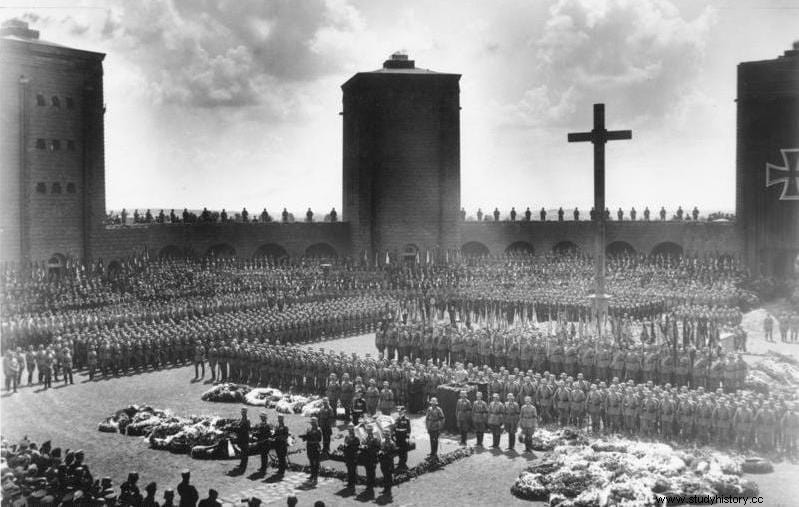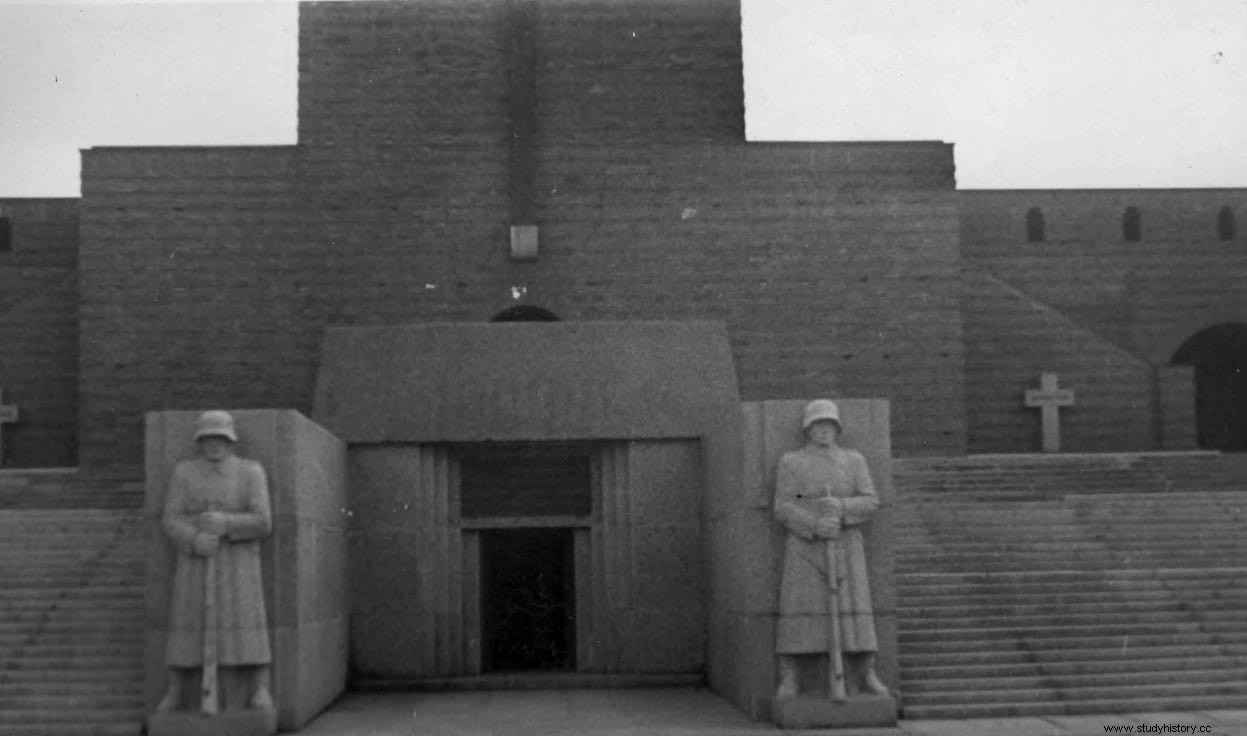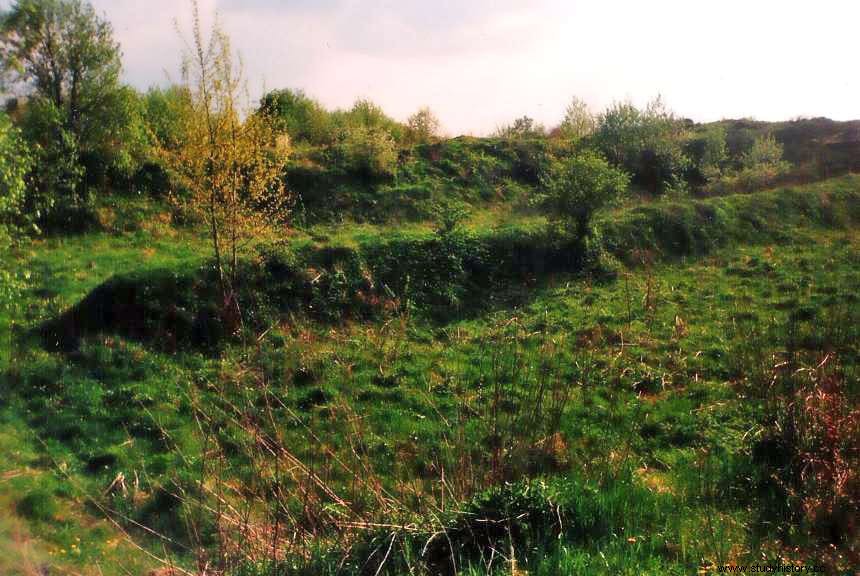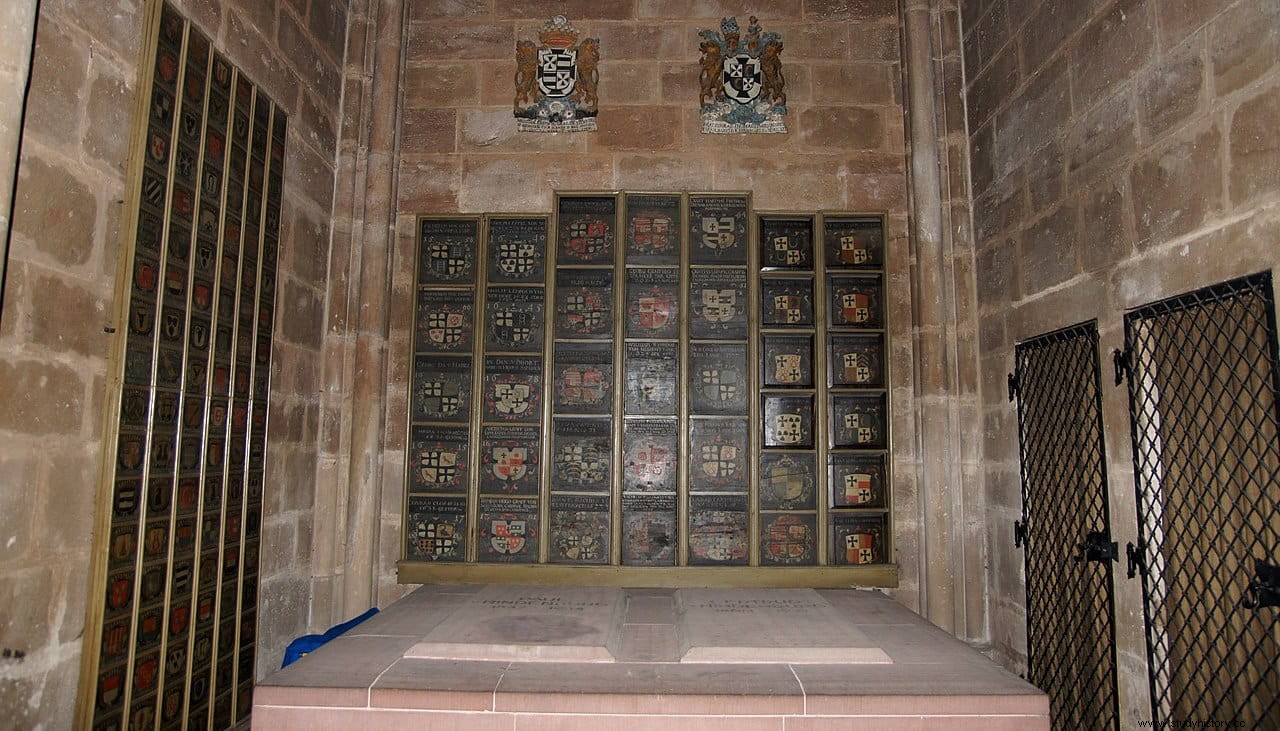History remembers Paul von Hindenburg , the second president of the Weimar Republic, as the man who brought the Nazis to power. Even though he was a convinced monarchist, he had accepted the presidency pressured by the conservative parties, when his state of health must have already been seriously diminished.
A career military man, in 1911 he had already retired from the army at the age of 63. But then World War I came and Hindenburg re-enlisted, being assigned to the Eighth Army as its commander.
He became a national hero by defeating the Russians at the Battle of Tannenberg in 1914, then resigned after the Treaty of Versailles.

When he ran for the presidency of the republic he was already 77 years old. He easily defeated his opponent, Adolf Hitler, but since the Nazis were in the majority in the Reichstag, he appointed him chancellor, on the advice of Franz von Papen. The rest is history.
Hindenburg died on August 2, 1934, and this is where another story begins, that of his six burials of him . Hitler himself ordered that he be buried in the Tannenberg Battle Memorial located near the then German city of Hohenstein (now the Polish city of Olsztynek). Against his last wishes, which were to rest in the family grave in Hanover with his wife.

But as a crypt had not yet been built in the monument, five days after his death he was buried in the adjoining gardens. . The following year he was unearthed along with the bodies of 20 German soldiers who lay in the same gardens, to begin construction work on the new crypt, whose work included lowering the square by about two and a half meters.
On October 2, 1935, his remains were placed in the finished crypt along with those of his wife, who had been transferred from Hanover. But in January 1945, with the advance of Soviet troops on Prussia, Hitler feared that the crypt would be violated and ordered the remains to be transferred to a Berlin bunker where they temporarily stayed.
They were then transferred to a salt mine in the town of Bernterode , along with the remains of Frederick William I and Frederick II the Great of Prussia, where they were buried 550 meters deep.

Three weeks later, on April 27, 1945, the four coffins were discovered by US troops, who had tunneled into the mine, probably looking for something else. The four were moved to the basement of Marburg Castle , where they spent practically an entire year, without anyone wanting to take charge of the matter.
Finally the US government decided that something had to be done with them, and those in charge were none other than the Monuments Men, who named the operation Operation Bodysnatch.
The secret operation consisted of burying them in the nearby church of Santa Isabel de Marburgo, prior consultation with the descendants of both families, which was carried out on August 19, 1946.

For fear that the bodies could be stolen, the graves were covered with thick steel plates and large blocks of stone with concrete, weighing about two tons. The Hindenburgs are still there today, while the monarchs finally rest in Potsdam. Thus ended an odyssey that led Hindenburg to be buried up to six times in just twelve years.
